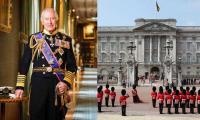SYDNEY: Australian scientists said on Wednesday that just seven percent of the Great Barrier Reef, which attracts around A$5 billion in tourism every year, has been untouched by mass bleaching that is likely to destroy half of the northern coral.
Bleaching occurs when the water is too warm, forcing coral to expel living algae and causing it to calcify and turn white.
Mildly bleached coral can recover if the temperature drops, otherwise it may die.
Although the impact has been exacerbated by one of the strongest El Nino weather systems in nearly 20 years, scientists believe climate change is the underlying cause.
“We’ve never seen anything like this scale of bleaching before.
In the northern Great Barrier Reef, it’s like 10 cyclones have come ashore all at once,” said Professor Terry Hughes, conveyor of the National Coral Bleaching Taskforce, which conducted aerial surveys of the World Heritage site.
“Our estimate at the moment is that close to 50 percent of the coral is already dead or dying,” Hughes told Reuters.
The Great Barrier Reef stretches 2,300 km along Australia’s northeast coast and is the world’s largest living ecosystem.
“There were some who said that the worst had passed.
We rejected that, and they were wrong,” Environment Minister Greg Hunt told reporters. “Let it be known that this is a significant event.
We take it seriously.” US President Barack Obama embarrassed Australia 18 months ago by warning of the risk of climate change to the reef during a G20 meeting.
UNESCO’s World Heritage Committee last May stopped short of placing the Great Barrier Reef on an “in danger” list, but the ruling raised long-term concerns about its future.
Australia is one of the largest carbon emitters capita because of its reliance on coal-fired power plants for electricity.
Former US president Donald Trump. — AFP NEW YORK: The judge overseeing former US president Donald Trump’s...
Bosnian Serb leader Milorad Dodik. — AFP FileSARAJEVO: The parliament of Bosnia´s autonomous Serb Republic adopted...
Australia's Prime Minister Anthony Albanese speaks during the opening ceremony of the 6th China International Import...
Indonesia's Ruang volcano. — AFP JAKARTA: Indonesia shut a provincial airport and evacuated hundreds of people...
Myanmar’s detained former leader and Aung San Suu Kyi. — AFP LONDON: Myanmar’s detained former leader and Aung...
President Ruto is seen with the chief of the Kenya Defence Forces General Francis Ogolla in this photo on 28 February....







